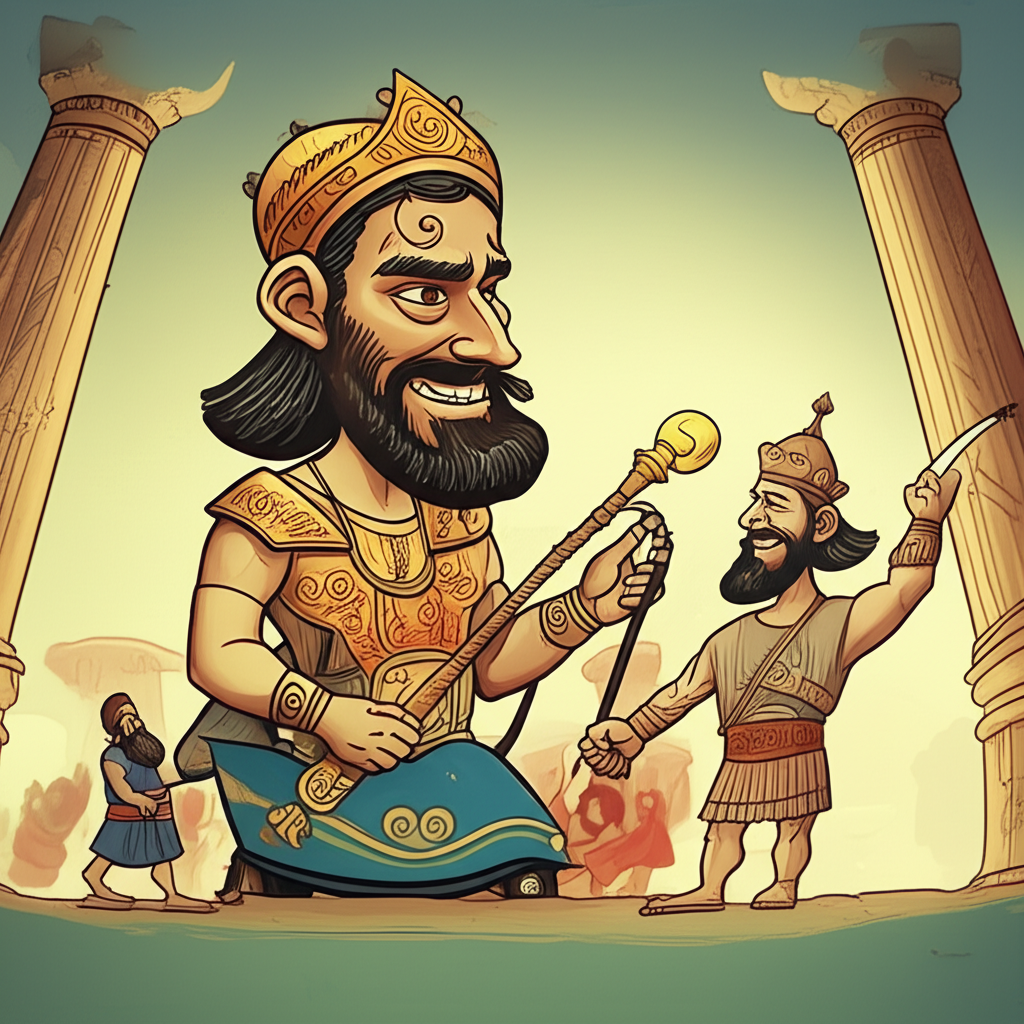
From the sun-baked plains of Mesopotamia, a land cradled between the life-giving Tigris and Euphrates rivers, comes a tale as ancient as the ziggurats that pierced its sky. The Epic of Gilgamesh, a narrative pieced together from cuneiform tablets, is not a historical account, nor a scripture to be believed, but a profound testament to the imaginative spirit of early civilizations. It is a story woven from the threads of human experience, anxieties, and aspirations, shared by the people of Sumer and later Babylon, offering a glimpse into their worldview.
The era in which these stories took root was one of burgeoning city-states, where irrigation canals transformed arid landscapes into fertile cradles of civilization. Life was intimately tied to the cycles of nature – the unpredictable floods, the scorching sun, the bounty of the harvest. Their understanding of the cosmos was animistic and polytheistic; a pantheon of powerful gods and goddesses governed the skies, the earth, and the underworld. They saw the divine in the natural world, and their myths served as a framework to understand its complexities, its beauty, and its terrifying power. The Epic of Gilgamesh, in this context, is a reflection of their struggle to reconcile human mortality with the perceived immortality of the gods, and their quest for meaning in a world often perceived as capricious.
At the heart of this epic stands Gilgamesh, the mighty king of Uruk. He is depicted as a being of immense strength and beauty, two-thirds god and one-third man. This divine lineage imbues him with unparalleled power, making him a formidable ruler, a fierce warrior, and a patron of the arts. His symbolic attributes lie in his sheer physicality and his position of absolute authority. He represents the ideal of kingship, the pinnacle of human achievement, yet his inherent divinity also sets him apart, hinting at the inherent loneliness that can accompany such greatness. Alongside him emerges Enkidu, a wild man created by the gods to challenge Gilgamesh’s tyranny. Enkidu is the embodiment of nature untamed, living amongst the beasts, a symbol of raw, primal existence. His transformation from this wild state into a companion and confidante of Gilgamesh signifies the bridging of the gap between the civilized and the natural, the human and the divine.
The narrative of Gilgamesh is a journey, a chronicle of his life and his profound encounters. After the death of his beloved companion Enkidu, a grief-stricken Gilgamesh is plunged into an existential crisis. The loss shatters his perception of invincibility, forcing him to confront the stark reality of his own mortality. This is the precipice of Uruk’s aftermath, the moment when the king’s world irrevocably shifts. Driven by a desperate fear of death, Gilgamesh embarks on a perilous quest to find Utnapishtim, the only mortal granted immortality by the gods. His journey is fraught with danger, leading him through desolate lands, across treacherous waters, and into the presence of formidable beings. He faces monstrous guardians, navigates the shadowy realm of the underworld, and ultimately confronts the ancient wisdom of Utnapishtim. The tale of his encounters, his despair, and his eventual, albeit different, understanding of life’s ephemeral nature forms the core of the epic.
The symbolism embedded within the Epic of Gilgamesh is rich and multifaceted. Gilgamesh’s initial arrogance and tyrannical rule can be seen as representing the unchecked power of a ruler, or perhaps humanity’s hubris in the face of natural forces. Enkidu’s transformation symbolizes the taming of the wild, the integration of nature into human society, and the development of empathy and companionship. The quest for immortality itself is a potent symbol of humanity’s age-old struggle with death, its fear of oblivion, and its yearning for something eternal. Utnapishtim’s story of the great flood, a recurring motif in Mesopotamian mythology, serves as a reminder of nature’s immense power and the gods’ ability to reshape the world. Ultimately, the epic may have represented to ancient peoples the inevitability of death, the importance of legacy, the value of friendship, and the wisdom of accepting life’s impermanence.
In the modern world, the Epic of Gilgamesh continues to resonate, its themes of mortality, friendship, and the search for meaning transcending millennia. It is studied in literature classes, analyzed for its historical and cultural insights, and has inspired countless works of art. Its narrative arc has influenced epic poems and adventure stories, while its characters and motifs appear in video games, films, and other forms of popular culture. Scholars interpret its allegorical layers, exploring its philosophical underpinnings and its place in the broader tapestry of human storytelling.
It is crucial to reiterate that the Epic of Gilgamesh is a traditional story, a product of ancient imagination, and not a divine revelation or historical fact. As Muslims, we recognize that the sole Creator and Sustainer of all existence is Allah. This epic, like all ancient myths, serves as a window into the cultural heritage and imaginative landscape of peoples long past. It highlights the enduring human drive to tell stories, to grapple with the mysteries of life and death, and to create narratives that offer solace, wisdom, and a sense of connection across generations. The echoes of Uruk, carried on the winds of time, remind us of the power of human creativity and the rich tapestry of our collective cultural inheritance.





